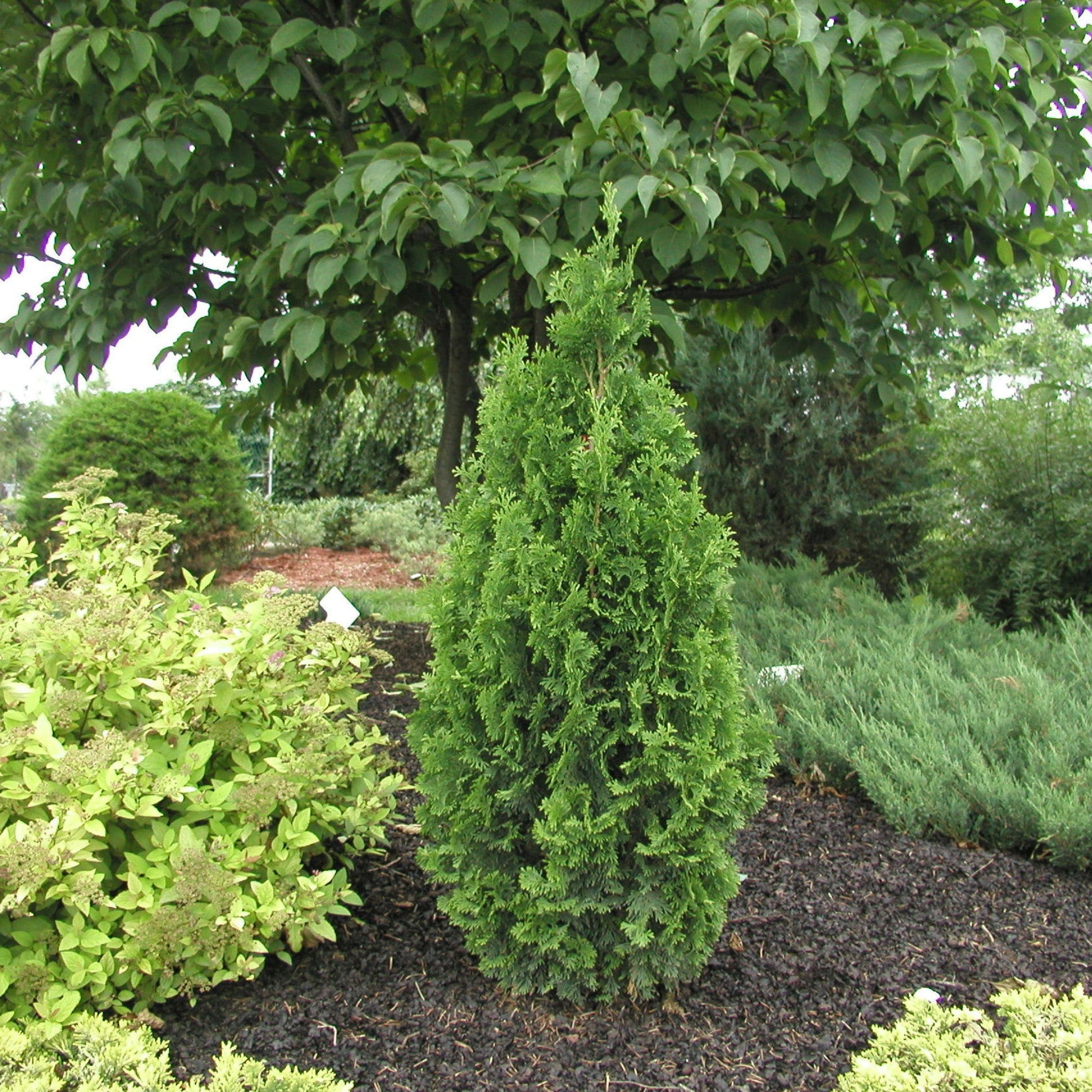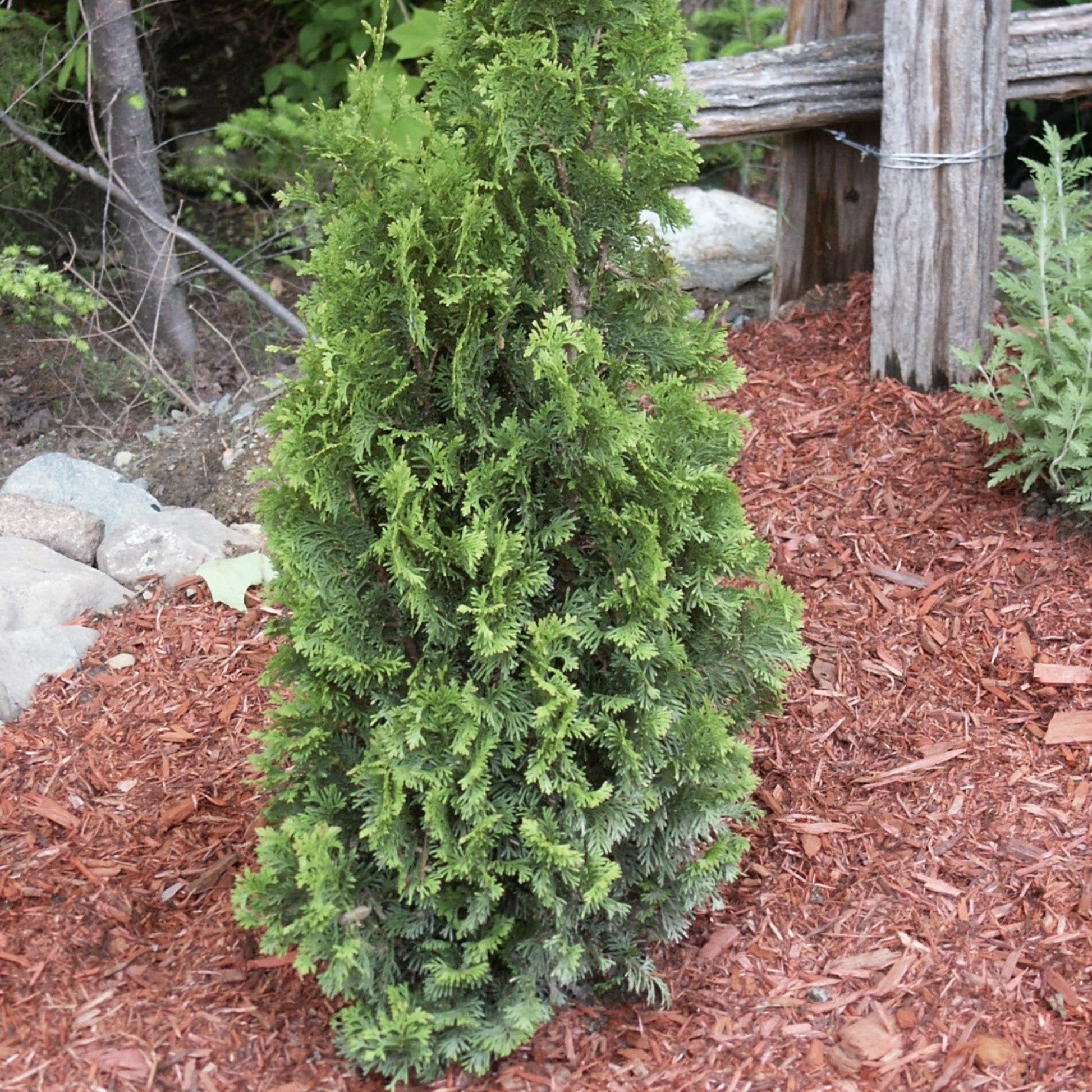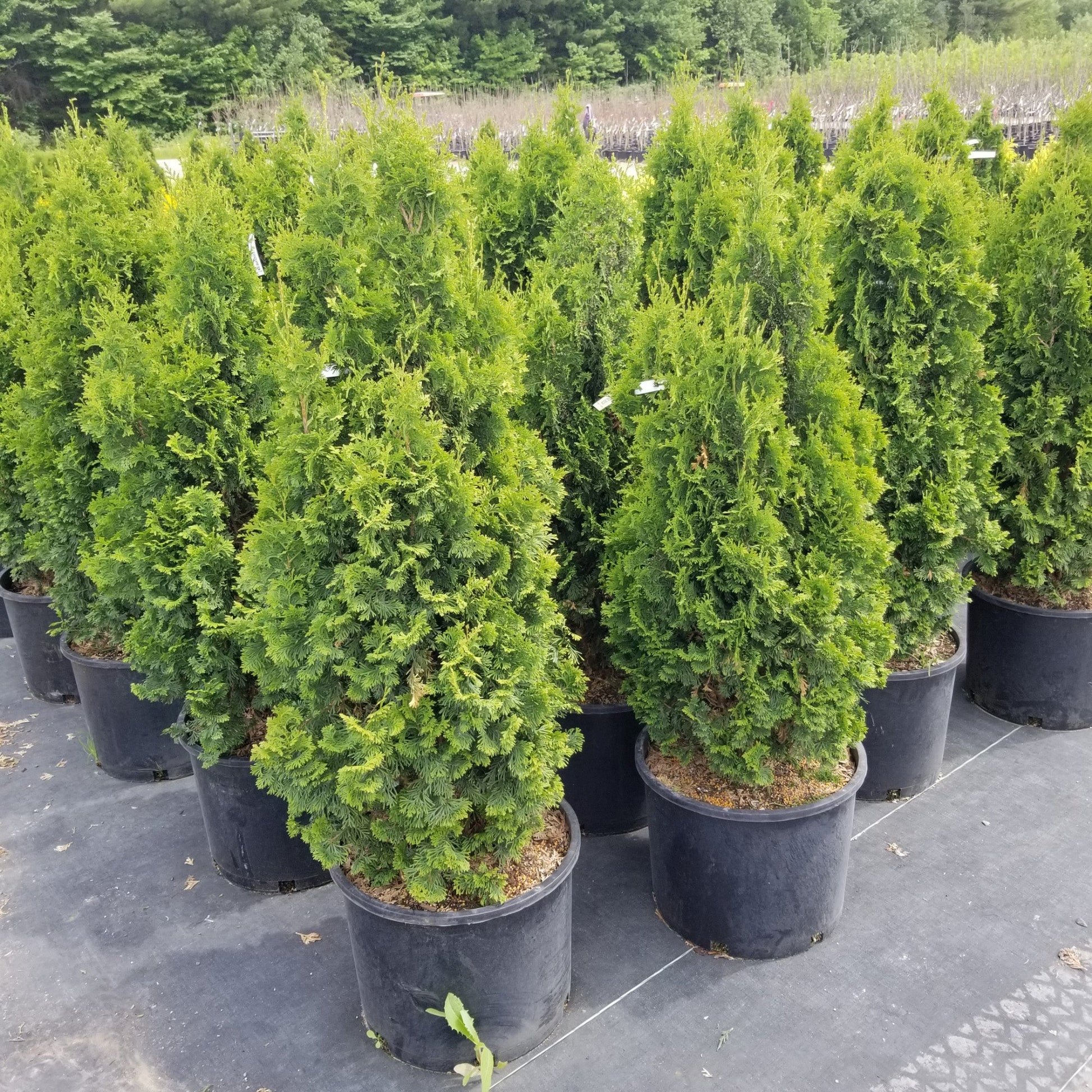Thuja occidentalis 'Degroot's Spire'
Thuja occidentalis 'Degroot's Spire' – 'Degroot's Spire' Arborvitae
Thuja occidentalis 'Degroot's Spire' – 'Degroot's Spire' Arborvitae
Exposure
- Sun
- Part-sun
- Part-shade
Rusticity
- Very narrow, columnar conifer
- Textured and twisted foliage
- Ideal for tight spaces
- Slow growing, easy care
- Very hardy, zone 3
The 'Degroot's Spire' Arborvitae is a conifer with an exceptionally narrow and elegant habit, making it a perfect solution for gardens where space is limited. This slow-growing variety develops a very defined, spire-like silhouette and a unique textured foliage. It brings a striking verticality to any landscape, whether as a specimen, in a group, or to form a thin privacy hedge.
Characteristics
- Foliage: It displays rich green evergreen foliage, composed of scales arranged in flat, slightly twisted sprays. This unique structure gives it a fine and distinctive texture. When crushed, the foliage releases a fruity, citrusy fragrance. It may take on a bronze or yellowish-brown hue in winter.
- Flowering: As with most conifers, its flowering is insignificant.
- Light: It thrives in full sun and partial shade, requiring 4 to 6 hours of sun daily. In hot climates, it appreciates some protection from the scorching afternoon sun.
- Habit: It develops a naturally very narrow, columnar, and pyramidal (fastigiate) habit. Its slender silhouette is one of its greatest assets.
- Growth: Slow. Over a period of 15 to 20 years, it reaches a height of 4.5 to 6 m (15-20 feet) with a spread of only 1.2 to 1.5 m (4-5 feet).
- Moisture: It prefers average and consistent moisture conditions.
- Soil: It adapts to a wide range of soils, including clay, but prefers moist, well-drained loams with a neutral to alkaline pH. It does not tolerate drought.
- Hardiness: Very hardy, it faces Zone 3 winters. However, it is best to plant it in a site sheltered from drying winter winds.
- Watering: It requires regular watering to keep the soil moist, especially during the first season and during periods of high heat. It does not tolerate standing water.
- Resistance: It handles air pollution and the proximity of black walnut trees well. However, it is susceptible to damage from the weight of snow or ice.
Uses
- Types of Use: It is the quintessential choice for creating a vertical accent, a thin hedge, or a privacy screen in narrow spaces, for example between two buildings. It also integrates very well into borders, rock gardens, or foundation plantings.
- Ornamental Features: Its architectural, slender silhouette offers permanent structure to the garden. Its unique texture and dense foliage create a point of visual interest all year round.
Care
- Fertilizing: Apply a balanced, all-purpose fertilizer in the spring to optimize its growth.
- Pruning: It tolerates shearing very well and can be pruned to maintain a very clean shape. Perform any pruning in early spring, before new growth appears.
- Planting: Choose a location protected from strong winds. Applying mulch at its base helps retain soil moisture. Note: The foliage may cause skin irritation in some people; wearing gloves is recommended when handling.
Plant details
Dimensions
Dimensions
Characteristics
Characteristics
Habit:
- Fastigiate
Flowering colours:
Plant needs
Plant needs
Watering:
- Tolerates wet soil
Maintenance:
- Easy
- Winter Protection
Soil requirement:
- Moderately rich
- moist soils
Features
Features
Resistance:
- Urban pollution
- Black walnut
Attract:
- Birds
Use:
- Clump
- Hedge
- Landscaping
- Specimen
Attribute:
- Evergreen foliage





Related articles
-
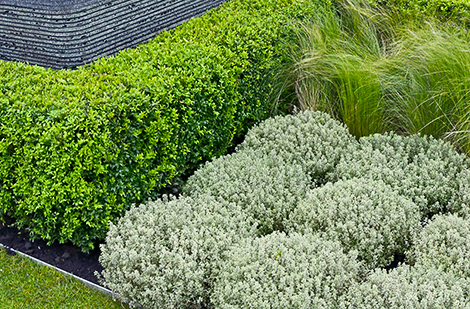
Hedge – other shrubs available
Read the articleCréez une haie mixte, composée de différentes espèces d’arbustes comme le buis, le saule et la spirée japonaise. Donnez du style à la cours arrière.
-

Fall Pruning: Key Steps for Your Trees, Shrubs,...
Read the articleFall is here, but do you know what to prune in your garden? Discover our guide to pruning trees, shrubs, and roses and make sure you take the right steps.
-
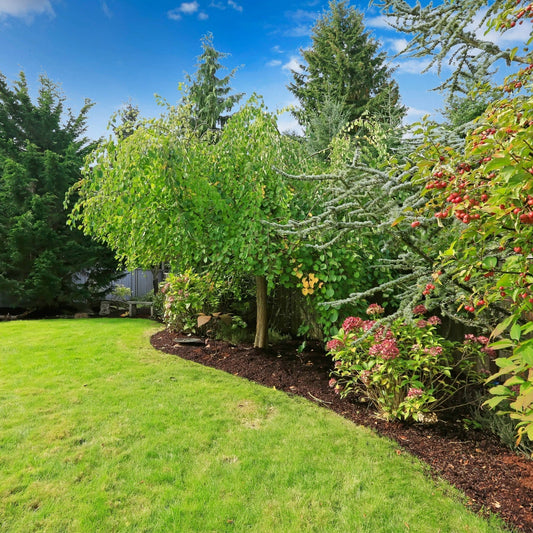
Trees and shrubs for small space landscaping
Read the articleHaving an exceptional garden is possible, even in the city! Discover our selection of trees and shrubs perfect for small lots, and transform your outdoor space into a green oasis.
-
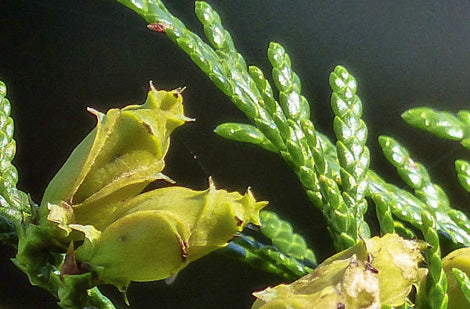
Ensure a healthy cedar hedge
Read the articleEntretenir sa haie de cèdres - arrosage, fertilisation, protection hivernale et taille. Peu exigeants, les thuyas résistent bien aux maladies et insectes
-
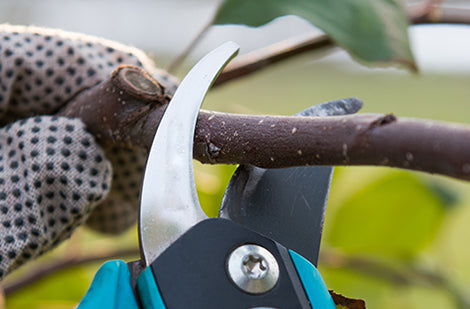
Pruning cuts for trees and shrubs
Read the articleWe all dream of a tree with well-distributed branches or a shrub full from its base to its top. To achieve this, they must be pruned. There are different types...
-

Cedar hedge : when and how to prune
Read the articleLes conifères n'ont pas besoin de beaucoup de taille, sauf lorsque vous les utilisez comme haies ou topiaires. Apprenez comment et quand tailler.

